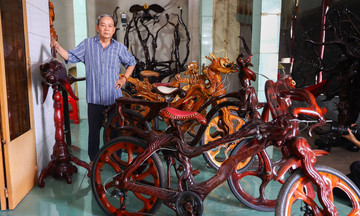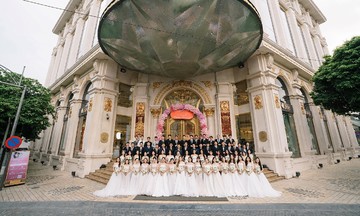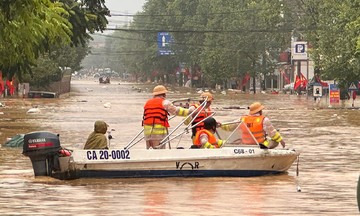"It was a difficult decision after 8 years in this city," said William, a 38-year-old British man, explaining why his family relocated from Hanoi to Hoi An at the end of 2024.
The thought of leaving Hanoi came to William Gray after he was stuck for half an hour in dense traffic on a bridge in Ha Dong district. He felt nauseous and his chest tightened.
"Life in Hanoi would be perfect if it weren't for the pollution," he said.
Every day, William commuted across Long Bien Bridge, enduring the smell of burning plastic from garbage fires, especially near construction sites. Rush hour traffic was a nightmare. Thick vehicle exhaust, gasoline fumes, and the stench of burning plastic irritated his throat and stung his eyes. His wife, a Hanoi native, also suffered from respiratory inflammation and a persistent cough, regardless of the weather.
His family moved to a new urban area in Gia Lam, hoping the air quality would be better further from the city center. But the situation didn't improve. Their health noticeably declined on days when the air quality index (AQI) was poor.
After much deliberation, they decided to leave Hanoi. They chose Hoi An, meaning William has to fly to Hanoi several times a month to meet clients. In return, every morning in Hoi An, he smells pine and straw in the fresh air. On weekends, they take their children to the beach to run and play.
"I think the trade-off is worth it," he said.
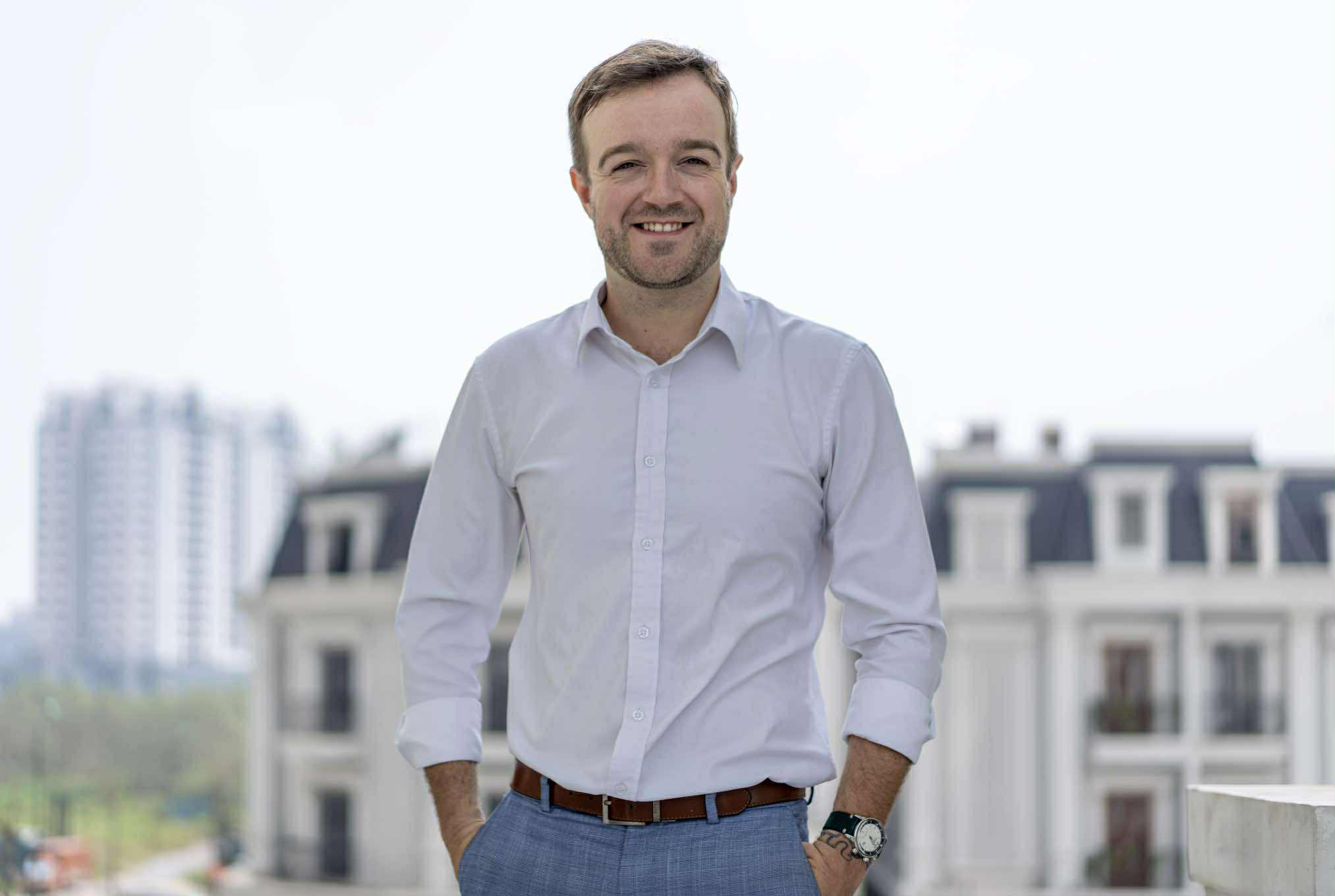 |
William Gray at his apartment in Tay Ho ward, Hanoi, December 2024. Photo courtesy of William Gray |
William Gray at his apartment in Tay Ho ward, Hanoi, December 2024. Photo courtesy of William Gray
William's decision comes as Hanoi is reportedly the 10th most polluted city globally, with PM2.5 levels consistently poor. It's estimated that over 40% of the city's population is exposed to PM2.5 concentrations twice the national standard. Analysis of the Global Burden of Disease Report shows that deaths from PM2.5 exposure in Vietnam increased from over 26,000 in 1990 to 42,000 in 2015.
Environmental health scientist Sumeet Saksena, a senior fellow at the East-West Center in Honolulu, USA, has studied Hanoi's air pollution for 16 years and confirms that environmentally driven migration is a worrying trend. His research indicates that outdoor air pollution in Vietnam contributes to a reduction in average life expectancy of about 1.4 years.
The health burden is significant for children, the elderly, and those with underlying health conditions. "Some residents have decided to relocate due to the poor air quality. Many want to but can't, mainly due to financial and social barriers," said Saksena.
A VnExpress reader survey yielded similar results. To the question, "Have you had to move to avoid air pollution in Hanoi?", 27% said they had relocated, and 58% wanted to move but lacked the resources.
"If the pollution persists, this migration flow will intensify, impacting foreign investment and the city's socioeconomic development plans," Saksena said.
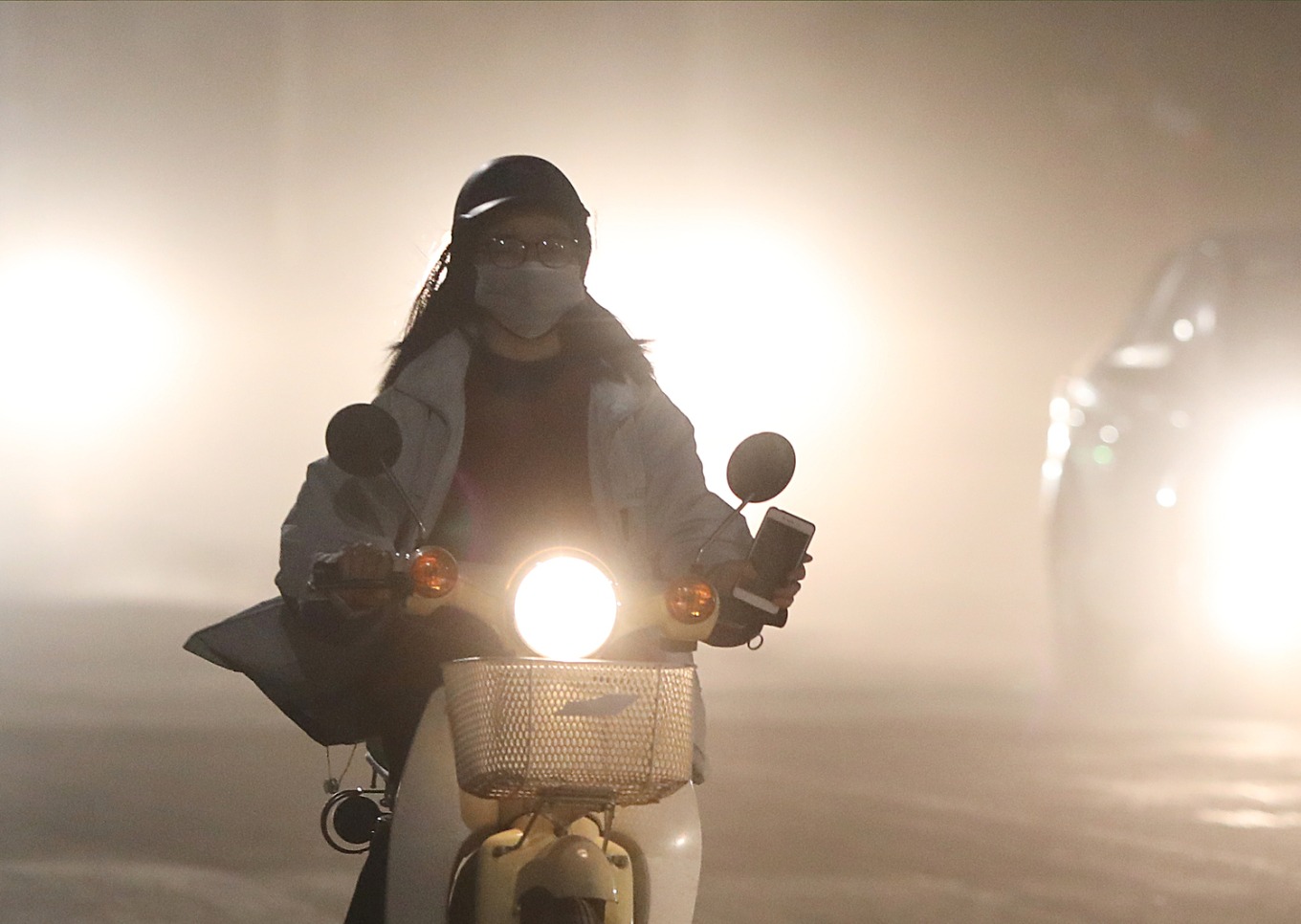 |
Hanoi residents wear masks while traveling outdoors to avoid air pollution. Photo: Ngoc Thanh |
Hanoi residents wear masks while traveling outdoors to avoid air pollution. Photo: Ngoc Thanh
Tamara Hoffman, from South Africa, described her decision to leave Hanoi as very difficult, as her friends and memories of nearly a decade are tied to the city. She was forced to leave after two pneumonia diagnoses last year. Doctors attributed the illness to pollution and advised her to wear a mask or stay indoors with an air purifier all day.
"It's sad because in 2017 I left China for Vietnam hoping for cleaner air. But once again, I have to leave for the same reason," Tamara said.
All 9 of her close friends, also foreigners, left Hanoi after starting families to protect their children's health from pollution. It took her over a year to decide to move to Ho Chi Minh City.
Since the beginning of 2025, Tamara has found life more meaningful, enjoying sunshine, swimming pools, and various outdoor sports. She has sold all her air purifiers and deleted her pollution-monitoring app. "My health has improved significantly," she said.
However, not all foreigners choose to leave. Many families accept "living with pollution" by investing in advanced home air filtration systems, limiting outings when the AQI is at the purple (hazardous) level, or choosing to live in greener urban areas on the city's outskirts.
Sumeet Saksena emphasized that Hanoi needs to take more drastic and faster action to reduce pollution. Restricting fossil-fuel motorcycles in the city center from 2026, expanding affordable electric vehicles, and improving public transport are steps in the right direction.
Simultaneously, waste management needs to tighten control over open burning and upgrade collection systems. The air monitoring system should expand with real-time data, combined with public alerts and citizen science programs to provide residents with personal exposure data.
"Urban planning should prioritize green spaces and ventilation corridors, combined with policies supporting the transition to clean vehicles. This is the only way for Hanoi to retain not just foreigners, but also its own residents," the American expert stressed.
Ngoc Ngan




